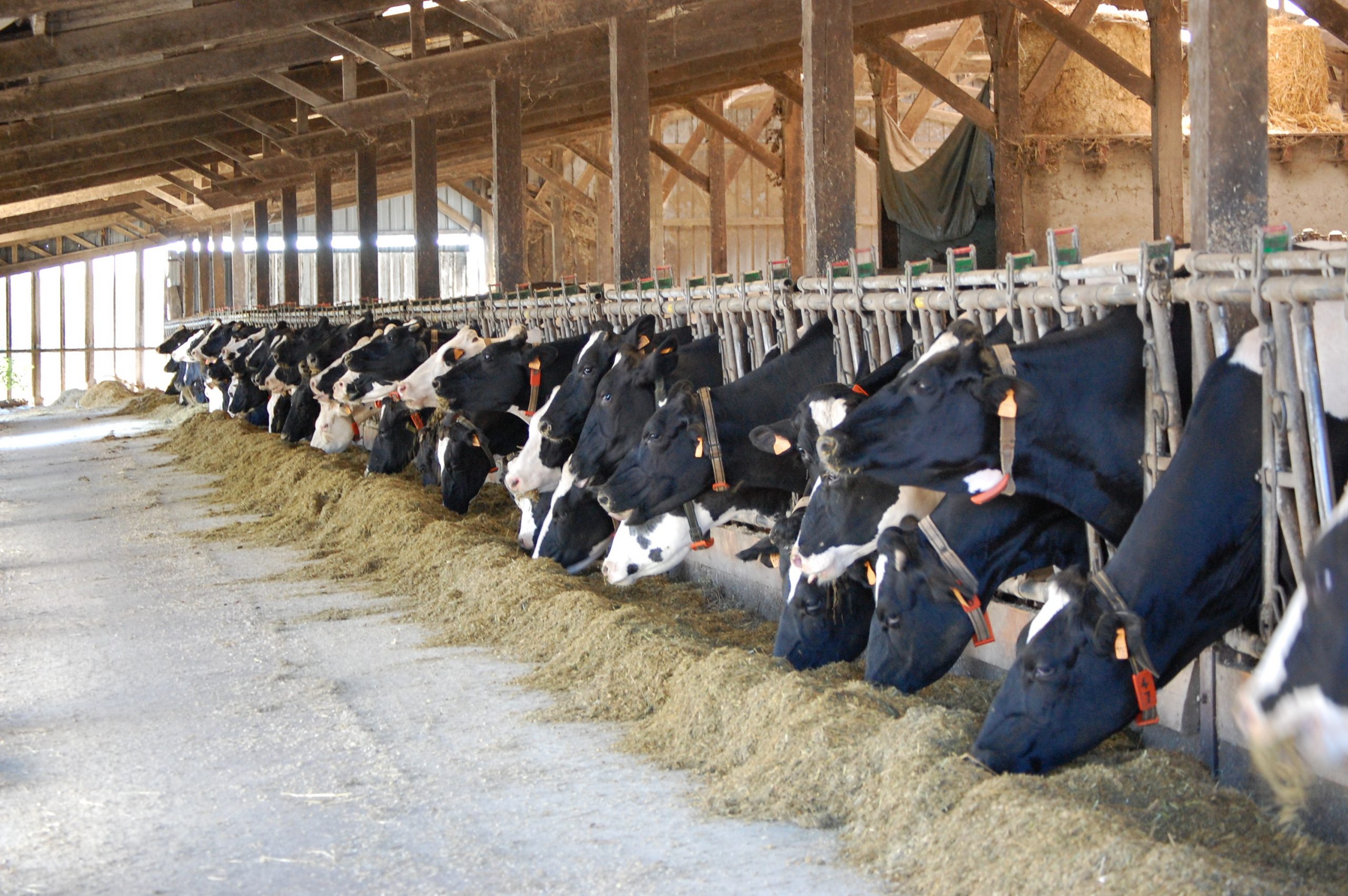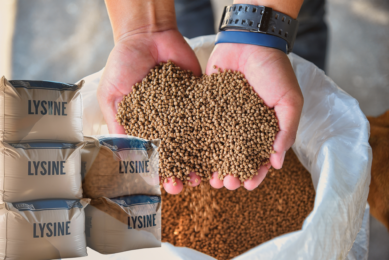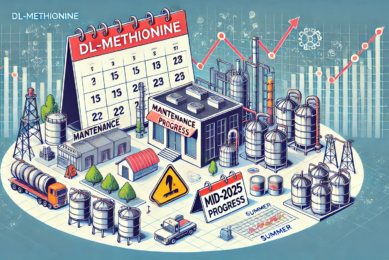Combatting inefficient nitrogen use in dairy cows

Feed efficiency is more than ever a concern on farms to allow animals to meet their genetic potential and to maximise farm profitability. This parameter has a great influence on production costs, animal performances and environmental releases. Gains are still be found in dairy cows, notably by increasing the efficiency of nitrogen utilisation.
In dairy cattle, feed efficiency can be defined as kilograms of energy corrected milk produced per kilogram of dry matter intake (DMI) consumed. Its values can vary from 1.1 to 2.0. Thanks to their symbiotic relationship, ruminants have these great abilities to digest cellulosic feed, to convert soluble nitrogen or to produce group B vitamins. However, these skills come along with some disadvantages. Digestion in ruminants leads to the undesirable production of gases (methane, ammonia) and substantial losses of energy and protein. It is said that methane accounts for 4-10% of the energy losses.
Inefficient use of nitrogen in ruminants
Compared to monogastric animals, ruminants have a rather low overall efficiency of nitrogen utilisation (gram of nitrogen in milk or meat/gram of nitrogen intake), with an average of around 25%. In comparison, with a perfectly balanced amino acids diet, swine can convert 85% of the absorbed nitrogen to tissue protein. This means that most of the nitrogen consumed is excreted in faeces (around 25%) and in urine (around 50%). The consequences are lower production performance, less economic efficiency and increased emission of gases into the environment.
There is a wide range of variation between 15-40% depending on farms, which is a reflection of the huge differences in feeding practices and possible ways of improvement. Indeed, the efficiency of nitrogen utilisation may be improved with a deep understanding of parameters involved in the utilisation of nitrogen. This includes nitrogen capture in the rumen by bacteria, protein degradation, digestion and absorption in the gastrointestinal tract and also amino acid utilisation in tissues.
Essential amino acids and nitrogen must be absorbed by the small intestine to support the synthesis of milk and the maintenance of body tissues. Microbial protein that flows into the lower gut is a major part of the protein available to support milk protein synthesis.
It has been proven that rumen metabolism is the most important factor contributing to the inefficient use of nitrogen in ruminants. This has led to extensive research on levers to optimise rumen microbial fermentation and nitrogen release in the intestine. Some recommendations have been made to balance the proportion of rumen degradable protein (RDP) and rumen undegradable protein (RUP), to control protein degradation and to modify the amino acids profile delivered to the small intestine.
In the rumen, ammonia (NH3) is produced during deamination of amino acids and non-protein nitrogen compounds, as urea. NH3 can then be used by microorganisms as a source of energy. As ammonia is toxic to cells, excesses are immediately absorbed through the rumen wall and transferred to the liver, where it is converted into urea. Some of the urea is transferred back to the rumen; the other part is excreted into the urine. It appears that excessive and rapidly produced ammonia may partially induce lower efficiency of nitrogen utilisation. At first, an answer to this problem has been the use of less degradable protein source and increased proportion of ‘bypass protein’. This successfully reduced NH3 content in the rumen but it can also lead, when used in excess, to reduced microbial protein synthesis due to less available nitrogen for microorganisms.
Controlling protein degradation in the rumen
Another way to reduce NH3 production without reducing available nitrogen is to control the protein degradation process. The aim is to stop the protein degradation process to peptides and amino acids, and to avoid deamination of amino acids. This would lead to less NH3 production without decreasing the supply of peptides and amino acids to bacteria.
One strategy to control protein degradation in the rumen is the use of different feed additives that act as modulators of rumen population.
- Ionophores (e.g. monensin, narasin) can be used to reduce nitrogen losses, as hyper ammonia producing bacteria are sensitive to them. Nevertheless, public concern around a potential transfer into meat and milk led to their prohibition in the EU since 2006 and reflects a growing interest for alternative solutions.
- Essential oils contain volatile fractions of plants; some of them show an antibacterial activity and lipophilic properties, used to modify the rumen microbial population. Indeed, gram-positive bacteria are more susceptible to essential oils than gram-negative ones, which have an outer shell that limits the access to hydrophobic compounds. Thus, essential oils may reduce the number of proteolytic bacteria and lead to reduced peptidolysis or deamination. A wide range of essential oils has shown this ability (Table 1).
- Tannins can also be used to reduce ruminal proteolysis and inhibit the growth of proteolytic bacteria.
Multifunctional approach
Mixscience has developed a complete and synergistic product to ensure both a better use of protein and carbohydrates in the diet. Valopro is a specific blend of essential oils, tannins, mineral salts and spices working together to ensure feed efficiency.
A trial carried out at the Mixscience Research Centre (MRC) in 2012 and repeated in 2013 looked at the effect of the product at 15 g/dairy cows/day during six weeks on several performance parameters. The protein concentrate of the experimental group was formulated with a reduction by 2% of the total nitrogen content compared to the control group. Utilising the product resulted in an increased protein and overall feed efficiency and resulted in a higher energy corrected milk (ECM) production (Figure 1).
Figure 1 – Improvement of average ECM, protein efficiency and feed efficiency with the use of Valopro.

In conclusion, greater efficiency will improve profitability and environmental sustainability. Nitrogen and carbohydrate efficiency of dairy cows can be improved with well-chosen feed additives, which directly affect the rumen and also have overall effects on the metabolism of the animals.











